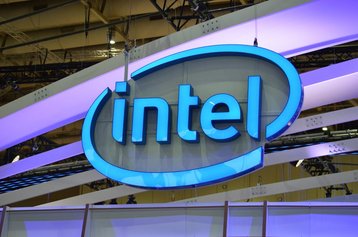Intel has announced it is cutting more than 15,000 jobs as part of a $10bn cost-saving plan after the company reported a net loss of $1.6 billion for Q2 2024.
The plan also involves reducing R&D and marketing spend by billions between now and 2026, cutting capex by 20 percent, and reducing non-variable cost of goods sold by roughly $1 billion in 2025. Intel said it wants to eliminate complexity by stopping overlapping areas of responsibility and what it calls "non-essential work."
In a statement, Intel said the layoffs are expected to be completed by the end of this year. The company will not pay its dividend in the fourth quarter of 2024.
“This is an incredibly hard day for Intel as we are making some of the most consequential changes in our company’s history,” CEO Pat Gelsinger wrote in a note to employees after the second-quarter 2024 earnings were published.
“Simply put, we must align our cost structure with our new operating model and fundamentally change the way we operate. Our revenues have not grown as expected – and we’ve yet to fully benefit from powerful trends, like AI. Our costs are too high, our margins are too low. We need bolder actions to address both – particularly given our financial results and outlook for the second half of 2024, which is tougher than previously expected,” he said.
The $1.6 billion loss reported by Intel substantially overshadows the $437 million loss Intel posted in the previous quarter. Intel Foundry, which reported a $2.5bn operating loss during the first quarter of 2024, lost an additional $2.8bn in Q2, although the business unit did see a year-on-year (YoY) revenue increase of four percent.
Intel has invested heavily in expanding its chip manufacturing capacity in recent years, plowing $20 billion into a semiconductor fabrication plant in Columbus, Ohio, and an additional $47bn across sites in Arizona, Germany, and Malaysia, and in March 2024, the company was awarded $8.5 billion in direct funding under the CHIPS and Science Act.
In May, it was reported that Intel was also in talks with an asset management firm to finance an $11bn chip fab in Ireland.
Elsewhere, revenue for Intel’s recently rebranded standalone FPGA (field-programmable gate array) business, Altera, was down 57 percent YoY to $361m.
Intel’s Data Center and AI (DCAI) and Network and Edge (NEX) segments also reported YoY revenue decreases, albeit in the single figures, dropping by three percent to $3bn and one percent to $1.3bn, respectively.
"We expect sequential growth in the data center through the second half as demand for traditional servers improves modestly," CFO David Zinsner said in an earnings call. "We're making the early inroads on the AI side of data center and that's only going to grow as we go into next year."
After the results were posted, Intel’s shares slid by as much as 20 percent in extended trading.
Gelsinger described the results as “disappointing” and acknowledged that “second-half trends are more challenging than we previously expected.”







